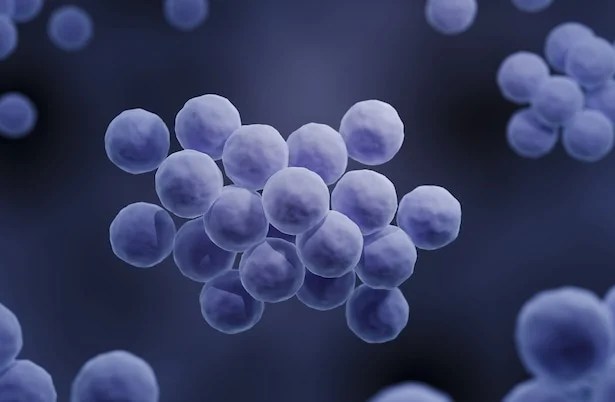A novel antibacterial lipopeptide produced by the bacterium Serratia marcescens is highly effective in killing Staphylococcus aureus, one of the most significant pathogens in humans.
Staphylococcus aureus is among the five most common causes of hospital-acquired infections, often leading to life-threatening infections following surgery. Since the introduction of antibiotics in the early 1940s, S. aureus has developed resistance to most classes of antibiotics, including penicillin. Over the last six decades, only two new classes of antibiotics have been introduced. One of these, daptomycin, is also a lipopeptide.
A paper recently published in Microbiology Spectrum provides the first insight into the mode of action of the lipopeptide serrawettin W2-FL10, derived from Serratia marcescens. This lipopeptide targets the cell membrane of S. aureus, causing lesions that result in the leakage of intracellular components and, ultimately, cell death.
Serrawettin W2-FL10 is not toxic to mammalian cells. This makes it a promising therapeutic agent for treating bacterial infections in humans. Additionally, the smaller structure of this lipopeptide (five amino acids and a C10 fatty acid chain) compared to daptomycin (13 amino acids and a C10 fatty acid chain) suggests significantly lower manufacturing costs for serrawettin W2-FL10.
The study investigated the antibacterial activity, cytotoxicity, and mechanism of action of the non-ionic, cyclic lipopeptide serrawettin W2-FL10 against S. aureus.
Isolated bacterial strains from wastewater samples produced biosurfactants effective against antibiotic-resistant and disease-causing bacteria. In polluted environments, bacteria naturally produce biosurfactants to protect themselves and outcompete other bacteria. Pigmented and non-pigmented S. marcescens strains produce a wide range of broad-spectrum antimicrobial compounds.
W2-FL10 demonstrated potent activity against Gram-positive bacteria, including S. aureus, Enterococcus faecalis, Enterococcus faecium, Listeria monocytogenes, and Bacillus subtilis, with minimum inhibitory concentration (MIC) values ranging from 6.3 to 31.3 μg/mL. However, it showed no activity against Gram-negative bacteria.
Key parameters contributing to the antimicrobial activity of lipopeptides include hydrophobicity and net charge. Serrawettin W2-FL10 is a relatively small and moderately amphipathic lipopeptide with a neutral charge. This lipopeptide showed potent activity against eight of the nine Gram-positive bacteria tested, with B. subtilis showing some resistance. This resistance is possibly due to the production of a surfactin complex containing anionic lipopeptides, which has been shown to antagonise activity by binding to the potent antimicrobial peptide gramicidin S. W2-FL10 exhibited nearly identical activity against five of the nine bacteria in the test panel, indicating similar bacterial targets, concentrations, and modes of action. Conversely, W2-FL10 exhibited its highest activity, outperforming melittin, against the L. monocytogenes and E. faecalis reference strains.
From these findings, the lipopeptide serrawettin W2-FL10 emerges as a promising candidate for further investigation into its antimicrobial properties.
Source: Stellenbosch University
Image Credit: iStock






